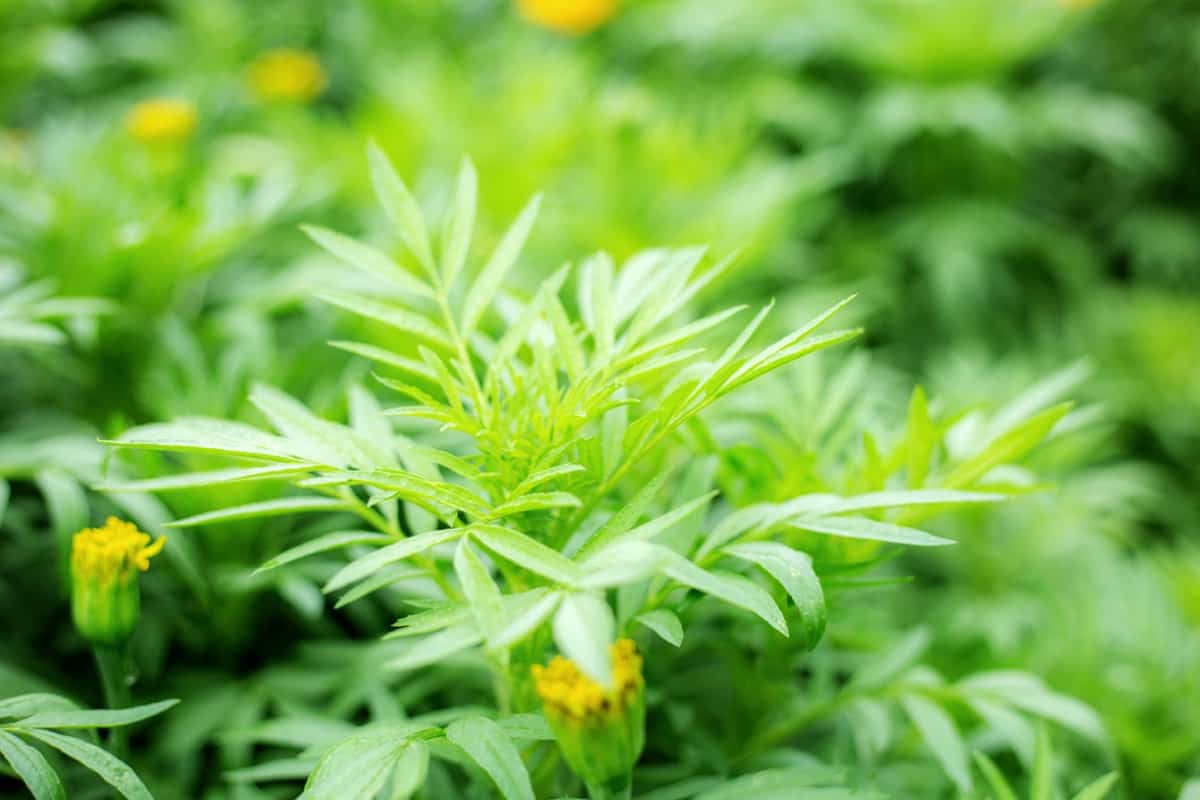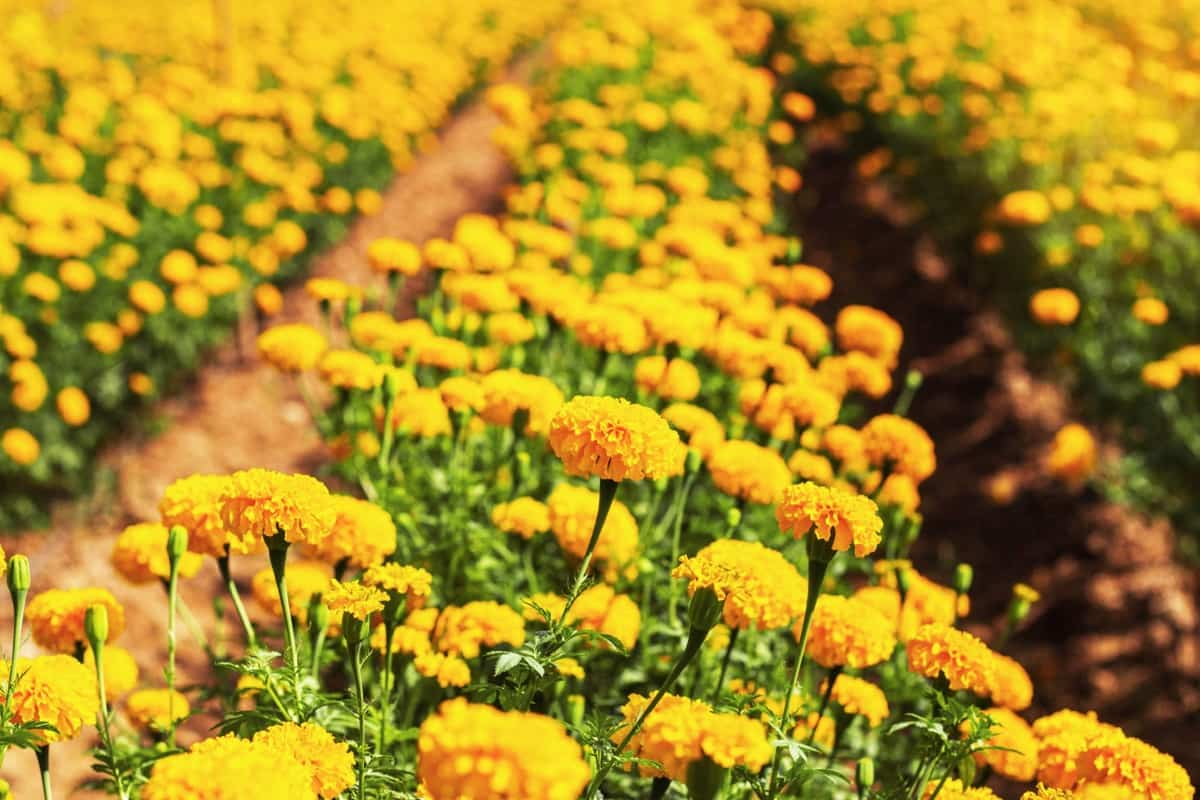Welcome to our blog post on Common Marigold Plant Diseases! Marigolds, with their fabulous blooms and diverse varieties, are lovely additions to gardens, but like any plant, they can be prone to a range of common diseases that can hinder their beauty and health. This blog post aims to discuss the 10 common marigold plant damaging diseases, including their symptoms, treatments, prevention, and management. So, get ready to explore these marigold plants’ ten most common diseases.

Important Points for Beginners to Identify and Manage Diseases in Marigold Plants
- Identifying the disease: The first step is identifying the disease infesting your marigold plant so that you can approach it with the most effective control method.
- Regular Monitoring: Monitor your Marigold plants regularly for signs of diseases. This will help you to identify an infestation early when it is easier to control.
- Sanitation: Remove the infected plant debris and burn them.
- Natural Control: Several natural control methods can help to manage diseases. These include plant extracts, essential oils, composting, and organic fungicides.
- Chemical Control: If natural controls are ineffective, use fungicides as a last resort, and follow the label instructions and dosage carefully.
10 Common Marigold Plant Damaging Diseases
Damping-off Disease in Marigold Plant
- Disease Symptoms by Rhizoctonia Solani: Damping-off starts with the rotting of seeds before they can germinate. The affected plants may show discolored, soft, mushy seeds and rotting and girdling of the stem. Affected seedlings may show a water-soaked appearance and a “damping-off” effect.
- Survival and Spread: Rhizoctonia solani prefers a warm and moist environment of 20-30°C for their growth. Organic matter and excessive moisture retention in the soil hinder proper aeration and create a conducive environment. Dense plantations, plant stresses, and infected plant debris promote disease development.
- Treatment, Maintenance, and Control Measures: Spray thiophanate-methyl, iprodione, metalaxyl, fludioxonil, copper oxychloride, dithane, formalin, captan, and carbendazim.
Collar Rot Disease in Marigold Plant
- Disease Symptoms by Phytophthora sp. and Pythium sp.: The plants develop lesions or cankers at the collar region, causing decay, rotting, and girdling of the collar region. Infected plants often show signs of wilting, chlorosis, stunted growth, and death.
- Survival and Spread: Phytophthora and Pythium sp. prefer warm temperatures and moist soil of 20-30°C and 85% humidity for their growth and reproduction. Dense canopy, excessive rainfall, poor soil drainage, poor structure, compaction, or high clay content can contribute to the disease.
- Treatment, Maintenance, and Control Measures: Spray metalaxyl, mefenoxam, fosetyl-aluminum, propamocarb, cyazofamid, fludioxonil, and thiophanate-methyl.
Flower Bud Rot Disease in Marigold Plant
- Disease Symptoms by Alternaria dianthi: The first noticeable symptom is the appearance of brown or black lesions on the flower buds. The affected areas become sunken and necrotic. The infected flower buds undergo rotting, decay, and collapse of the entire flower bud structure.
- Survival and Spread: Alternaria dianthi prefers a warm and humid climate of 20-30°C and >70% humidity for their survival. Prolonged dew formation, dense canopy, overhead irrigation, injuries, infected plant debris, wet leaves, and flower buds contribute to the disease.
- Treatment, Maintenance, and Control Measures: Spray copper hydroxide, copper oxychloride, azoxystrobin, thiophanate-methyl, propiconazole, tebuconazole, chlorothalonil, dithane m-45, and mancozeb.
Powdery Mildew Disease in Marigold Plant
- Disease Symptoms by Oidium sp.: The characteristic symptom of the disease is the white or grayish powdery coating on the plant’s leaves, stems, and flowers. Infected leaves may become distorted, wrinkled, stunted, yellow, curl, and drop prematurely. Infected buds will deform and show discoloration.
- Survival and Spread: Oidium sp. prefer moderate temperatures and high humidity of 20-25°C and 50-70% humidity to germinate and infect the plants. Prolonged leaf wetness, poor airflow, and dense canopy create an ideal habitat.
- Treatment, Maintenance, and Control Measures: Spray myclobutanil, tebuconazole, propiconazole, karathane, sulfur dust, sulfex, azoxystrobin, chlorothalonil, and mancozeb.
Wilt and Stem Rot Disease in Marigold Plant
- Disease Symptoms by Phytophthora cryptogea: Infected plants may exhibit wilting, yellowing, or browning of the leaves. The symptoms typically start on the lower leaves and progress upward. The infected plants may show rotting of the stem at the base of the plant.
- Survival and Spread: Phytophthora cryptogea prefers warm temperatures and moist soils of 20-30°C and >85% humidity for reproduction and survival. Excessive soil moisture, poor drainage, and poor airflow provide an ideal environment for the pathogen to thrive and reproduce.
- Treatment, Maintenance, and Control Measures: Spray metalaxyl, azoxystrobin, dimethomorph, phosphorus acid, acibenzolar-S-methyl (ASM), and salicylic acid.
In case you missed it: Common Chrysanthemum Plant Damaging Pests: Symptoms, Treatment, Prevention, and Management

Alternaria Leaf Spot Disease in Marigold Plant
- Disease Symptoms by Alternaria spp: The lesions are water-soaked and dark brown to black with a concentric ring pattern, gray or brown center, and a dark brown or black border. The affected plants show leaf spotting, blighting, and stem and petiole dieback symptoms.
- Survival and Spread: Alternaria spp prefers a warm and humid climate of 20-30°C and >70% humidity for spore germination and infection. Higher plant density, poor air circulation, frequent rain, overhead irrigation, or prolonged periods of leaf wetness contribute to disease spread.
- Treatment, Maintenance, and Control Measures: Spray chlorothalonil, carbendazim, mancozeb, azoxystrobin, propiconazole, tebuconazole, hexaconazole, and dithane m-45.
Cercospora Leaf Spot Disease in Marigold Plant
- Disease Symptoms by Cercospora megalopotamica: The primary symptom is the development of water-soaked spots of brownish-purple or grayish center with a yellow halo around them. Infected plants show leaf chlorosis, defoliation, discoloration, and stem dieback symptoms.
- Survival and Spread: Cercospora megalopotamica prefers warm and humid weather of 20-30°C and >70% humidity for their growth and spread. Prolonged leaf wetness is crucial for the germination and infection of the spores.
- Treatment, Maintenance, and Control Measures: Spray chlorothalonil, captan, mancozeb, bavistin, azoxystrobin, tebuconazole, propiconazole, and hexaconazole.
Botrytis Flower Blight or Grey Mold Disease in Marigold Plant
- Disease Symptoms by Botrytis Cinerea: The characteristic symptom is the decay or rotting of flowers. Infected flowers turn brown or grayish, mushy, and develop a gray fuzzy and velvety mold coating. Infected buds fail to develop or open prematurely and exhibit decay. Infected stems show dark brown to black discoloration, stem blight, and wilting symptoms.
- Survival and Spread: Botrytis cinerea prefers moderate temperatures, high humidity of 15-25°C, and >85% humidity for fungal growth and spore production. Prolonged Leaf Wetness, infected plant debris, and overcrowded plantings with limited air circulation contribute to the disease.
- Treatment, Maintenance, and Control Measures: Spray chlorothalonil, mancozeb, thiophanate methyl, azoxystrobin, pyrimethanil, boscalid, difenoconazole, tebuconazole, propiconazole, and hexaconazole.
Fusarium Wilt Disease in Marigold Plant
- Disease Symptoms by Fusarium oxysporum: The primary symptom is the wilting of the plant. Infected plants show leaf wilting, discoloration, chlorosis, vascular browning, stunted growth, and death.
- Survival and Spread: Fusarium oxysporum prefers warm and moist soil of 25-30°C for its survival and growth. High soil moisture, poor drainage, plant debris, poor soil health, and dense canopy create an ideal environment for the fungus to multiply and infect the plant roots.
- Treatment, Maintenance, and Control Measures: Spray metalaxyl, carbendazim, captan, thiram, thiophanate-methyl, propiconazole, and azoxystrobin.
Root Rot Disease in Marigold Plant
- Disease Symptoms by Rhizoctonia solani: The roots of affected plants show signs of constriction, girdling, decay, and discoloration. They become slimy and exhibit a foul odor. Infected leaves show signs of chlorosis, wilting, and stunted growth.
- Survival and Spread: Rhizoctonia solani prefers warm and moist soil of 20-30°C to disseminate spores. Excessive soil moisture or poor drainage, organic matter, plant debris, dense canopy, and poor airflow provide a conducive environment for the fungus to proliferate.
- Treatment, Maintenance, and Control Measures: Spray thiophanate-methyl, benomyl, iprodione, vinclozolin, boscalid, penthiopyrad, formalin, dithane, carbendazim, and chlorothalonil.
In case you missed it: 10 Common Chrysanthemum Plant Damaging Diseases: Symptoms, Treatment, Prevention, and Management

Conclusion
Common marigold plant diseases include damping-off, collar rot, flower bud rot, powdery mildew, wilt & stem rot, alternaria leaf spot, cercospora leaf spot, botrytis flower blight, fusarium wilt, and root rot. By identifying the disease, inspecting plants regularly, and using natural control methods, you can help to keep your marigold plants healthy and beautiful.
- Beneficial Insects in Pest Management
- Natural Solutions for Pest Control in Flower Gardens
- Types of Fungicides Used in Agriculture
- Common Issues in the Fruit Development Stage of Pomegranate Farming
- Fruit Development Issues in Papaya: Easy Solutions and Treatment
- Soil-Borne Diseases and How to Protect Your Plants
- Practices to Prevent Disease Spread in the Garden
- From Wilted to Thriving: How to Treat Root Rot Naturally in Houseplants
- Natural Remedies to Cure Brown Spots on Fig Tree Leaves